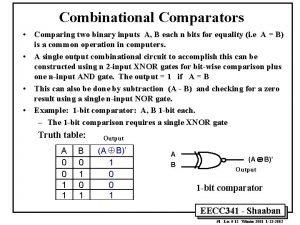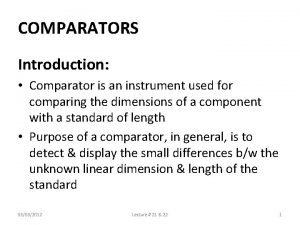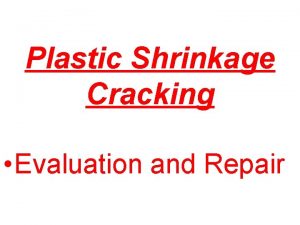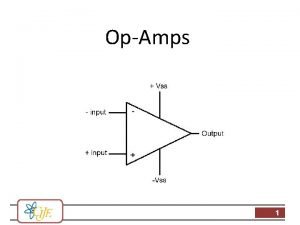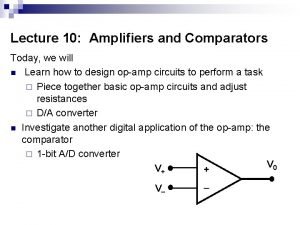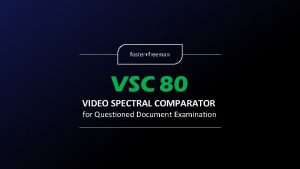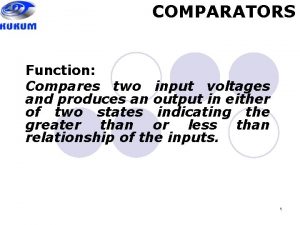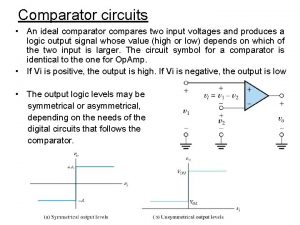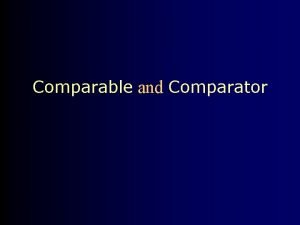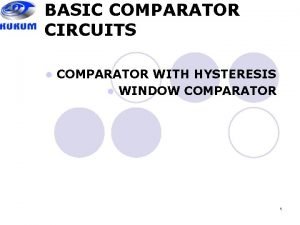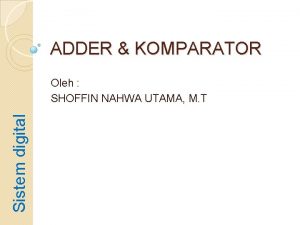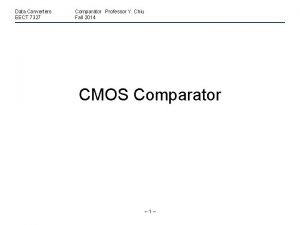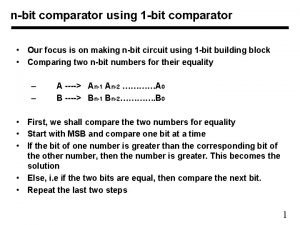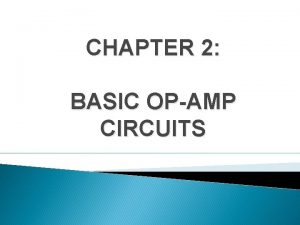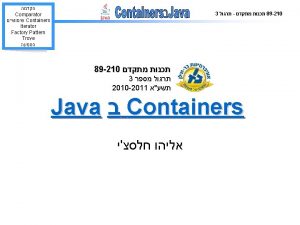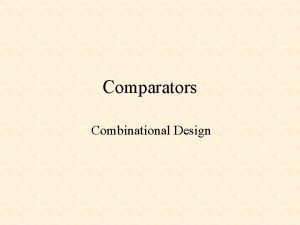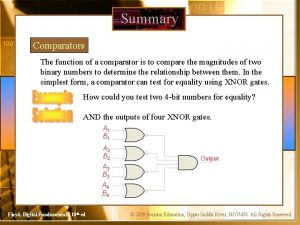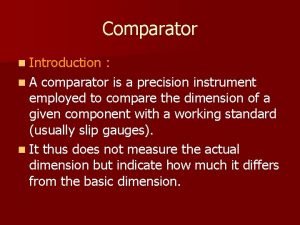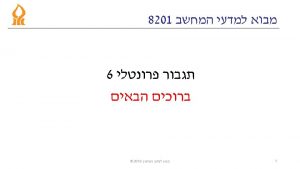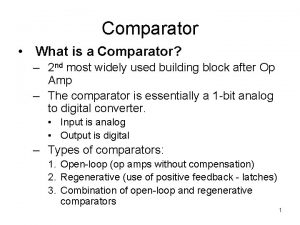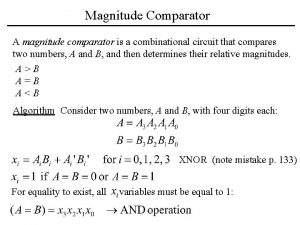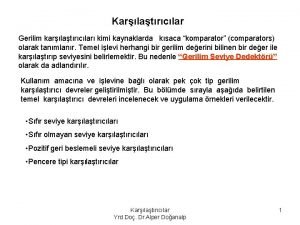Unit II COMPARATORS NEED FOR A COMPARATOR i





















- Slides: 21

Unit II

COMPARATORS

NEED FOR A COMPARATOR (i) In mass production, where components are to be checked at a very fast rate. (ii) As laboratory standards from which working or inspection gauges are set and correlated. (iii) For inspecting newly purchased gauges. (iv) Attached with some machines, comparators can be used as working gauges to prevent work spoilage and. to maintain required tolerances at all stages of manufacturing (v) In selective assembly of parts, where parts are graded in three or more groups depending upon their tolerances.

TYPES OF COMPARATOR (1) Mechanical comparators (2) Pneumatic comparators (3) Optical comparators (4) Electrical comparators (LVDT) (5) Fluid displacement comparators (6) Projection comparators (7) Multi-check comparators (8) Automatic gauging machines

MECHANICAL COMPARATOR 1}DIAL INDICATOR (Dial Gauge) 2}Johansson 'Mikrokator‘ 3}Sigma Comparator

Systems of Displacement Amplification used in Mechanical Comparators Rack and pinion Compound levers Cam and gear train Twisted taut strip Lever with toothed gear. Lever combined

COMPARATOR

DIAL INDICATOR

Working dial Gauge

Johansson ‘Mikrokator’

Sigma Comparator

OPTICAL COMPARATOR • PRINCIPLE • MECHANICAL OPTICAL TYPE • ZEISS ULTRA OPTIMETER

PRINCIPLE

MECHANICAL OPTICAL TYPE COMPARATOR

ZEISS ULTRA-OPTIMETER

PNEUMATIC COMPARATOR

• • • • Advantages: 1. It is cheaper, simple to operate and the cost is low. 2. It is free from mechanical hysteresis and wear. 3. The magnification can be obtained as high as 10, 000 X. 4. The gauging member is not in direct contact with the work. 5. Indicating and measuring is done at two different places. 6. Tapers and ovality can be easily detected. 7. The method is self cleaning due to continuous flow of air through the jets and this makes the method ideal to be used on shop floor for online controls. Disadvantages: 1. They are very sensitive to temperature and humidity changes. 2. The accuracy may be influenced by the surface roughness of the component being checked. 3. Different gauging heads are needed for different jobs. 4. Auxiliary equipments such as air filters, pressure gauges and regulators are needed. 5. Non-uniformity of scale is a peculiar aspect of air gauging as the variation of back • pressure is linear, over only a small range of the orifice size variation.

ELECTRICAL AND ELECTRONIC COMPARATOR • PRINCIPLE • LINEAR VARIABLE DIFFERENTIAL TRANSFORMER(LVDT)

PRINCIPLE

LINEAR VARIABLE DIFFERENTIAL TRANSFORMER(LVDT)

 4 bit comparator using 2 bit comparator
4 bit comparator using 2 bit comparator Comparators python
Comparators python Comparator instrument
Comparator instrument If statement verilog
If statement verilog Why comparators are useful testing utilities
Why comparators are useful testing utilities Tesa upd
Tesa upd Aci224
Aci224 Comparator amplifier
Comparator amplifier Comparator
Comparator Sahli method principle
Sahli method principle Foster and freeman vsc 80 price
Foster and freeman vsc 80 price Threshold comparator
Threshold comparator Ideal comparator
Ideal comparator Java comparator comparing boolean
Java comparator comparing boolean Window comparator with hysteresis
Window comparator with hysteresis Komparator 2 bit
Komparator 2 bit Applications of comparator
Applications of comparator Sigma comparator
Sigma comparator Profile projector advantages and disadvantages
Profile projector advantages and disadvantages N bit comparator
N bit comparator Double bounded comparator
Double bounded comparator Comparator design pattern
Comparator design pattern
